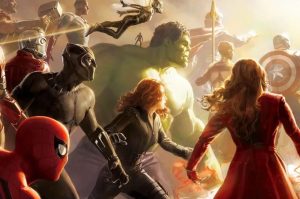About halfway through the Swedish space saga Aniara, I realized that there is no future. Or at least no alternative future for us in space. For a genre set in a distant future, space movies haven’t changed in decades. The limits of the form, and the techno-dystopian implications of the flight from reality, were mapped out in the Fifties and Sixties. The peak space movies were all made a long time ago: Stanley Kubrick’s 2001: A Space Odyssey (1968), Ridley Scott’s Alien (1979), Philip Kaufman’s The Right Stuff (1983), and Ron Howard’s Apollo 13 (1995).
The same goes for the thoroughly Fifties’ format of science fiction, and the flurry of ‘space-rock’ music, which went off like a rocket in 1962 with The Tornadoes ‘Telstar’, went into orbit in 1967 with The Rolling Stones’ ‘2000 Light Years From Home’, and then crash-landed in a field at dawn with Hawkwind’s Space Ritual (1973). The space movie is now as quaint and optimistic as Concorde, if you can remember what that was. It’s like our imaginations can’t be bothered to keep up. We’re so hopeless down here on the ground that we’ve lost the will to contrive a fantasy future.
There’s nothing like a good apocalypse. It’s nice to have something to look forward to. Aniara is loosely based on a profoundly depressing lost-in-space poem from 1956 by Swedish chucklemaster Harry Martinson. These days, everything is loosely based on something else, mostly because we can’t quite remember the details, but back in the Fifties, the Europeans still knew how to do despair and apocalypse. The war had given them such good material, and they were still close enough to Christianity to remember the future that they had lost. These days, modern Europe is only loosely based on the Europe of the 1950s, still tethered to the conventions of its postwar past like Sandra Bullock in Gravity.
Aniara’s title comes, as you will of course remember, from the Ancient Greek ἀνιαρός, ‘despairing’. The Good Ship Lollipop this is not. In Martinson’s original, Earth becomes uninhabitable due to nuclear war. People leave for Mars, but their craft gets knocked off course. Passengers and crew are condemned forever to float hopelessly through the dark eternity of space. This sensation will be familiar to anyone who’s ever taken a Baltic ferry, and to anyone who watches Aniara the movie, which was filmed on a Baltic ferry and, for the scenes which really scrape the barrel of cosmic hopelessness, in a Swedish shopping mall.
The loosely adapted film is loosely directed by Pella Kagerman and Hugo Lilja, who have previous convictions in another genre from the Fifties, zombie movies. Nuclear war is passé, a little too Cold War, if you remember what that was, so Earth is now ruined by environmental disaster. Our heroine is the Mimarobe (Emelie Jonsson), a technician operating the Mima machine, a computer-consciousness that taps into your cheerier memories and gives you a virtual reality flashback to ‘Earth as it once was’ — rather like the visions of paradise lost shown to the dying in Soylent Green.
When Aniara spins off course after colliding with space debris and jettisoning its fuel, the captain prepares to live forever in space on a diet of martial law and algae. The passengers, understandably distressed, spend as much time as possible face down on the floor of the Mima. In year three, Mima has a nervous breakdown, because its users actually need images of horror. ‘There is no protection from mankind,’ the machine says, before exploding.
It’s pigs in space from then on. By year five, the suicide rate is running higher than Stockholm in December, and the captain can only retain control with punishment beatings and extra servings of algae. Penitential cults roam the corridors of the cruise ship. A fertility cult smear each other in algae and conduct sex rituals more Haight Ashbury than Ancient Greece amid the ruins of the Mima. ‘We’ve been knocked off course and can’t steer back,’ the captain says, possibly in allegory for modern Swedish society, possibly in a moment of Mima-style higher consciousness about the legacy of Sixties’ movies about spaceships.
I enjoyed Aniara, and it’ll make you miserable too. Futuristic space films aren’t about space and the future; they’re about the here and now. There’s something comforting about their provinciality and familiarity, like taking a favorite pillow to Mars. American movies about space reduce human variety to the trained responses of the American military pilot. A Swedish space movie orbits around traditional Swedish themes. As Lemmy Kilminster said of Hawkwind’s music, ‘Almost classical, but a bit more violent than Bach.’


















